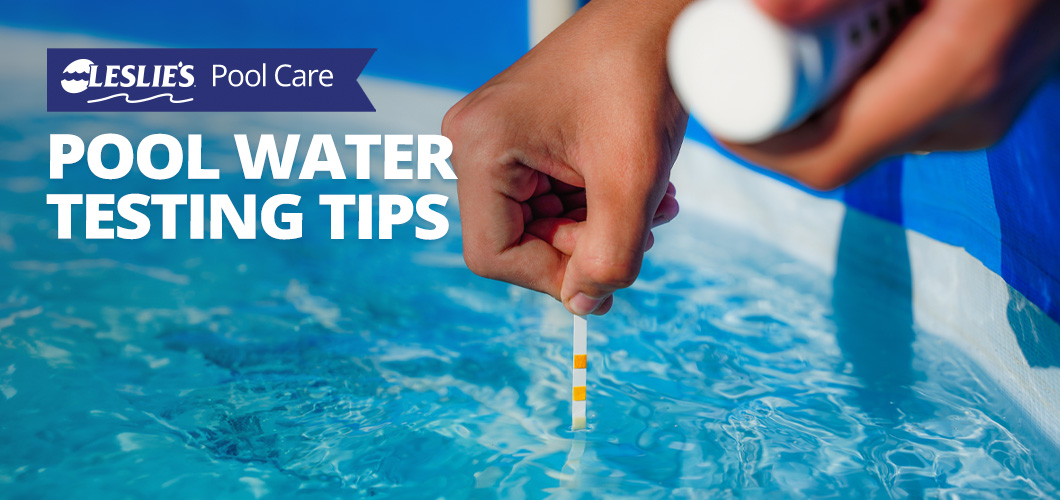
Pool Water Testing Tips
Testing your pool water is one of the most important things you can do for your pool. By obtaining an accurate reading of your water chemistry, you can understand exactly how much product to put in your pool. This not only saves you money by preventing the possibility of over-treating your water, but also keeps your pool healthy all year long.
For an accurate and professional reading, we recommend bringing your water into a local Leslie’s store for a Free 10-Point AccuBlue® Water Test. Leslie's also offers many options to use at home, such as Test Kits, Test Strips, and Electronic Testing Equipment.
While testing your water at home is simple, there are a few things you should know to ensure proper readings:
Water Sample
The ideal sample will be from about 12”-18” below the water surface after the system has been on for around an hour. A good rule of thumb is to fill the test kit from about elbow-deep in the pool water.
Chlorine Issues
High chlorine levels can skew other readings such as pH and Total Alkalinity. If high levels of chlorine are present, make sure to use a chlorine neutralizer per the instructions on your kit.
NOTE: There is no chlorine neutralizer for test strips. Thus, a test kit using reagents may be a better option if you regularly experience high chlorine levels.
Test in the Morning
If you are having chlorine issues in your pool, the best time to get a water sample is in the morning. Even with proper amounts of chlorine stabilizer, chlorine will burn-off during the day. Testing in the morning will give your water a chance to circulate all night and avoid the sun's UV rays.
Test Strips
When using test strips, there may be a 10-20 second delay for the colors to change on the strips. Once the stated time has passed, compare the test strip as soon as possible.
NOTE: Waiting too long may allow the colors to continue changing and provide an inaccurate reading. This applies to using reagents, as well. We recommend an easy-to-use kit, like the Leslie's 5-Way Test Kit.
Test Kit
When using a test kit, slowly add the reagents to the water. Sometimes, reactions in the water take a moment to occur. This applies when using reagents as well.
Storage
Store all test materials in a cool, dark area.
Expiration Date
Check your testing materials for accuracy on a yearly basis. Like most things, these materials can expire. When that happens, readings may be incorrect.
Circulation
Water tests should be completed before adding any chemicals. On that same note, pool chemicals can take up to a day (sometimes longer depending on the product) to have their full effect seen in a water test. Therefore, it is a good rule of thumb to wait at least 24 hours after adding chemicals to test your water again.
Free In-Store Testing
Even if you test your water at home on a consistent basis, we recommend taking a sample to your local Leslie’s store for a free AccuBlue® water test to ensure all aspects of your water are within their proper ranges.
If you have any other questions about water testing, please call or visit your local Leslie’s store.